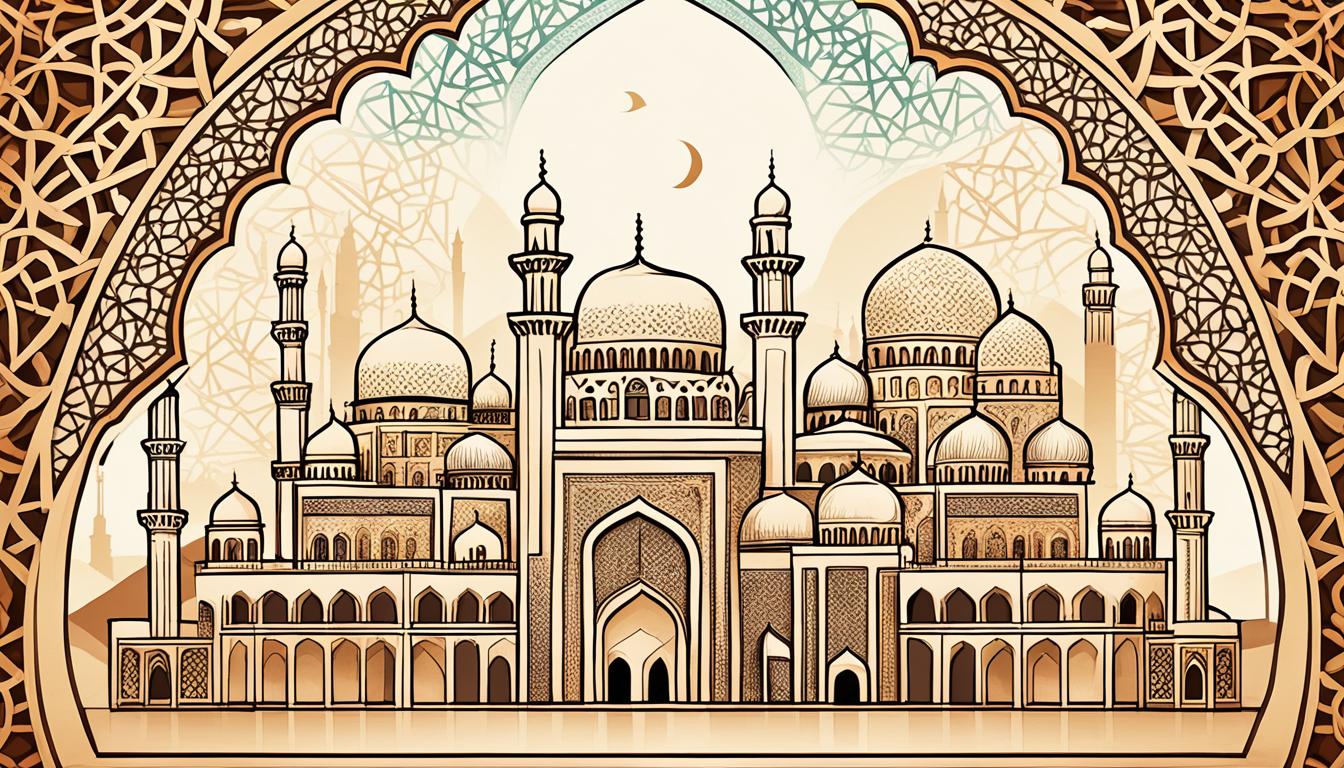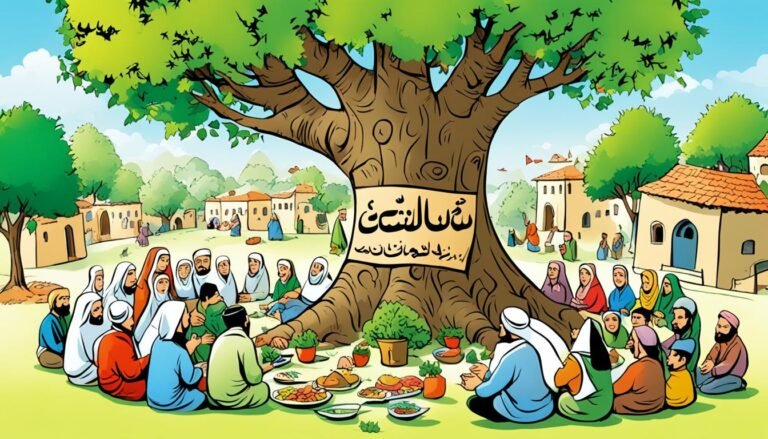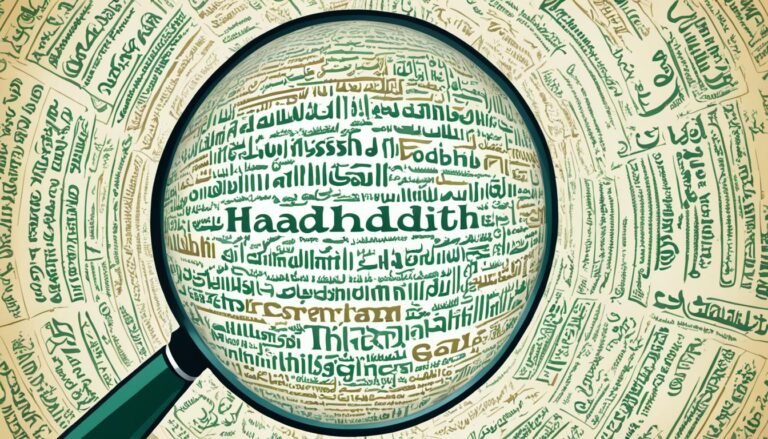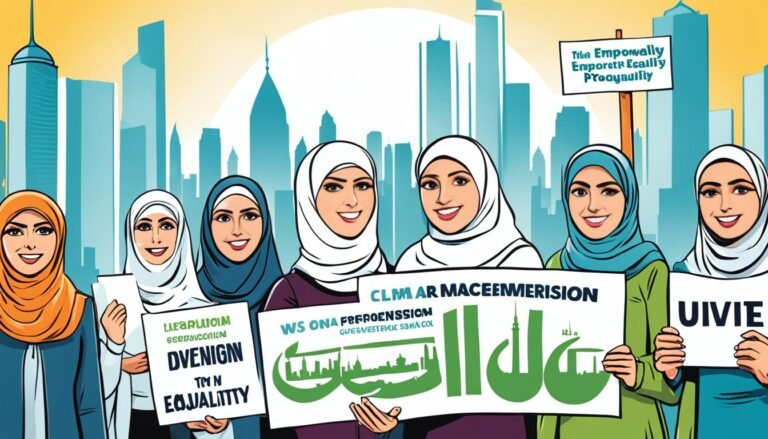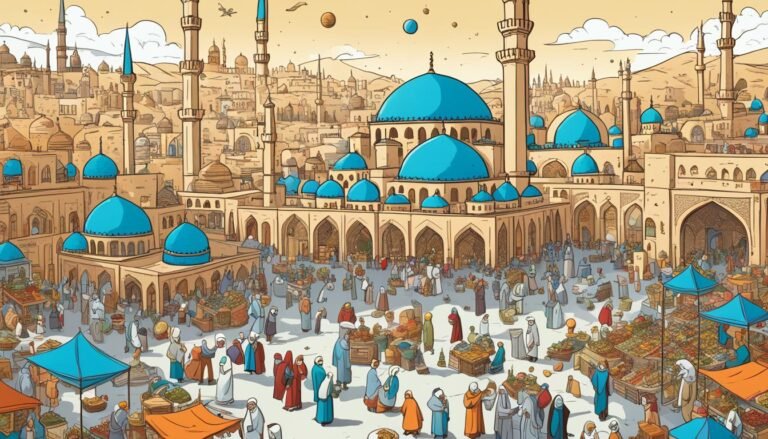Islamic Art and Architecture: A Journey Through History
Why does Islamic art and architecture have such a lasting impact on our culture today? This journey takes us through the history of Islamic art, showing how it has changed over time. It’s shaped by many influences and deep religious beliefs. Over 1400 years, Islamic art has covered many areas like architecture, calligraphy, painting, and textiles.
As we look at the main features and important buildings, we’ll see how Islamic culture and the meeting of civilizations have shaped it. This art tells us a lot about the history and beliefs of Islamic people.
Key Takeaways
- Islamic Art and Architecture has evolved significantly over 1400 years, reflecting the diverse influences on Islamic heritage.
- The art features unique characteristics such as arabesque designs, geometric patterns, and calligraphy.
- Key historical structures, like the Dome of the Rock and the Great Mosque of Kairouan, showcase early architectural brilliance.
- Islamic art generally avoids figural representation, focusing instead on decorative motifs and patterns.
- Modern museums play a vital role in preserving and appreciating the rich history of Islamic artistic traditions.
Introduction to Islamic Art and Architecture
The world of Islamic art and architecture tells a story that goes back to the 7th century. This Introduction to Islamic Art invites you to see the beauty made from different cultures and histories. As Islamic civilization grew, a unique style came to life. It was shaped by local styles and historical events.
In Islamic history, buildings like the Great Mosque in Damascus and the Blue Mosque in Istanbul show the art’s greatness. These were made by dynasties like the Umayyad, Abbasid, Seljuk, and Ottoman. Each added their own touch, with things like beautiful tilework, elegant calligraphy, and complex patterns.
From the 8th to the 11th centuries, ceramics, textiles, and metalwork were big. This showed how different cultures mixed in Islamic art. Art like manuscript illumination and miniature painting became more popular after the Mongol invasions. This shows how much art was valued by scholars and artisans.
This look into Islamic architecture shows the beauty and what it reflects. It tells us about the beliefs and values of the Islamic community. By exploring art and architecture, we learn more about Islamic civilization and its lasting impact.
The Historical Context of Islamic Art
The rise of Islamic civilization changed art and culture forever. As Islam spread, it brought together different artistic styles. This mix created a unique art scene that showed both religious and regional themes.
The Formation of Islamic Civilization
The Umayyad caliphate, from 661–750, was key to Islamic art’s start. It blended many cultural styles, making a new artistic identity. This era introduced key elements like calligraphy and geometric patterns.
Influence of Regional Centers on Artistic Development
As Islam grew, local art scenes became more important. Places like Spain, North Africa, and the Middle East let different styles and techniques thrive. The Abbasid dynasty, from 750-1258, helped spread goods and ideas far and wide. This led to a richer Islamic art that kept its own style despite outside influences.
Key Characteristics of Islamic Art
Islamic art is rich and diverse, showing unique features. It plays a key role in sharing the spirituality and cultural values of Islamic civilization. The art includes intricate designs and motifs that show the artistic beliefs of the tradition.
Geometric Patterns and Abstraction
Geometric patterns are a big part of Islamic art. They act as a way to show abstraction, meaning infinity and the divine. These patterns create a feeling of unity and order, often found in mosques and decorative items.
The arabesque is a common sight in Muslim art. It mixes geometric and organic shapes, leading to beautiful designs. These designs make people think and reflect.
Floral Motifs and Calligraphy
Floral motifs and Islamic calligraphy are also key in Islamic art. Flowers in art symbolize nature’s beauty. Calligraphy turns words into art, often using verses from the Quran. This mix of text and design adds beauty and deeper meaning to objects.
Islamic Architecture: A Distinctive Style
Islamic architecture is known for its unique mix of detailed design and practical use. It started in the 7th century and shows the blend of religious, cultural, and regional influences. Features like arches, domes, and minarets are key to its look and function.
Understanding Islamic Architectural Elements
Islamic architecture is marked by several key elements:
- Arches: These help support the structure and add beauty as they connect different areas.
- Domes: Found in mosques, they represent the heavens and pull the eye towards the sky.
- Minarets: These tall towers have both a practical and symbolic role, helping to call people to prayer.
- Muqarnas: These decorative pieces add depth and texture to the surfaces of domes and arches.
- Geometric Patterns: These detailed designs are crucial for decoration, showing off the skill of the craftsmen.
Significant Structures from the Early Islamic Period
Early Islamic structures show the growth of this architectural style. The Dome of the Rock in Jerusalem, built in 691 AD, has an octagonal shape covered in beautiful mosaics. The Great Mosque of Kairouan, finished in 836 AD, is famous for its square minaret, the oldest one still standing.
The Great Mosque of Samarra, built between 848 and 861 AD, has a unique spiral minaret inspired by ancient Mesopotamian ziggurats.
The Taj Mahal, built by Mughal Emperor Shah Jahan, is famous for its white marble and beautiful inlays. The Sultan Ahmed Mosque, also known as the Blue Mosque, has thirteen domes and six tall minarets, showing Ottoman architectural skill. Studying these early Islamic buildings reveals the creativity and innovation of Islamic builders over time.
| Structure | Year Completed | Location | Notable Features |
|---|---|---|---|
| Dome of the Rock | 691 AD | Jerusalem | Octagonal shape, mosaics |
| Great Mosque of Kairouan | 836 AD | Tunisia | Oldest square minaret |
| Great Mosque of Samarra | 848-861 AD | Iraq | Spiral minaret |
| Taj Mahal | 1653 AD | Agra, India | White marble, intricate inlay work |
| Sultan Ahmed Mosque | 1616 AD | Istanbul, Turkey | Thirteen domes, six minarets |
The Rich Tapestry of Islamic Artistic Traditions
The mix of culture and religion shapes Islamic artistic traditions. These traditions show the deep link between spirituality and creativity. Islamic art reaches far, touching places like the Middle East, North Africa, and more. It brings together different techniques and materials, showing the wide range of Islamic culture.
Influence of Culture and Religion on Art
Islamic art blends cultural elements with a strong religious focus. It uses art to share spiritual messages. Calligraphy is a key example, using Arabic script in texts, designs, and objects. Each part of calligraphy has a deep spiritual meaning, showing the role of language in Islamic culture.
Evolution of Techniques and Materials
Artisans have created unique techniques and materials over time. The Alhambra’s stucco work shows the skill of craftsmen. The Blue Mosque in Istanbul is known for its six minarets and Iznik tiles. The Taj Mahal combines Persian, Indian, and Islamic styles, with white marble and floral patterns.
These different cultures have shaped materials and techniques, creating a unique artistic identity. In India, various dynasties and cultures have influenced art. This has led to sculptures and patterns that blend spirituality with tradition, still evolving today.
| Art Form | Characteristics | Influences |
|---|---|---|
| Calligraphy | Flowing Arabic script, decorative | Culture and religion |
| Architecture | Geometric patterns, elaborate tile work | Regional variations, historical architectures |
| Textiles | Intricate designs, vibrant colors | Local craftsmanship, cultural motifs |
| Metalwork | Detailed engravings, functional art | Trade influences, technological advancements |
Islamic Landmarks Around the World
Islamic landmarks are full of architectural beauty and cultural heritage. They show the beauty and spiritual values of centuries. From the detailed famous mosques to the big palaces, each one tells stories of faith, community, and power.
Famous Mosques: Symbols of Faith and Community
The beauty of famous mosques amazes both visitors and locals. They are symbols of faith. The Great Mosque of Samarra in Iraq, built in 851 CE, shows the beauty of Islamic architecture with its large size.
The Umayyad Mosque in Damascus, from around 715 CE, shows the deep history of Islam. The Friday Mosque of Yazd in Iran, made in 1323, shows how mosques are places for community and show great architecture.
Palatial Architecture: Reflections of Power and Grandeur
Palatial architecture shows the sophistication and strength of Islamic rulers. The Alhambra, from the 14th century, has intricate designs and beautiful gardens. It shows the grandeur of the Nasrid dynasty.
The Suleymaniye Mosque complex, built from 1550 to 1557, is a great example of Ottoman architecture. These landmarks show the power and cultural achievements of their times.
Islamic Art and Architecture: A Journey Through History
The Islamic art journey from the 7th to the 13th century is a story of creativity and change. It’s a time when art and beliefs merged, creating something new. This period saw the rise of key artistic movements that changed the way we see art, architecture, and calligraphy.
Tracing the Artistic Journey from the 7th to the 13th Century
In the early days, Islamic art was shaped by the cultures it met through trade and conquest. It was influenced by Roman, early Christian, Byzantine, and Sassanian art. This mix of styles created the unique look of Islamic art.
The Influence of Key Artistic Movements
As the Islamic empire grew, new artistic styles appeared. These styles mixed local traditions with Islamic values. Geometric patterns, arabesques, and calligraphy became key features of this time. Each movement showed the creativity in Islamic art and architecture.
| Period | Key Artistic Movement | Characteristics |
|---|---|---|
| 7th Century | Umayyad Period | Introduction of monumental architecture; early mosques |
| 8th Century | Abbasid Period | Geometric patterns and vibrant ceramics; blending of cultures |
| 10th Century | Fatimid Period | Complex floral motifs and exquisite textiles |
| 13th Century | Mamluk Period | Elaborate calligraphy and incorporation of glasswork |
Regional Centers of Islamic Art
The regional centers of Islamic art were key in shaping the art of Islamic civilization. Places like Spain and North Africa added their own special touches. These regions mixed local traditions with Islamic art, creating something new and rich.
Exploring the Art of Spain and North Africa
Spain’s art during the Umayyad period was a beautiful mix of Islamic and local styles. In North Africa, countries like Tunisia and Morocco were famous for their detailed tile work and beautiful mosques. Their art showed a unique blend of local skills and Islamic beauty, making it stand out.
Artistic Developments in Iraq, Syria, and Iran
Iraq, Syria, and Iran were big names in Islamic art. Each brought its own style, especially in ceramics and textiles. Iraq was a leader in lustre glazing, making pottery shine like metal. Syria was known for its early Islamic buildings with amazing mosaics and stucco.
In Iran, art thrived in miniature painting and grand architecture. The beauty of mosques and palaces showed the country’s artistic skill.
The Role of Museums in Preserving Islamic Heritage
Museums are key in keeping Islamic heritage alive. They protect precious artifacts and help us appreciate Islamic art. Through pieces like calligraphy and architecture, we see a history that goes beyond borders and faiths.
Overview of Major Islamic Art Collections
The Museum of Islamic Art in Cairo is a top spot for Islamic art. It started in 1881 and now has over 100,000 items. After fixing up, it reopened in 2017, showing its dedication to saving this art.
Impact of Modern Museums on Cultural Appreciation
Modern museums play a big part in teaching us about Islamic art. They show the variety in Islamic culture and clear up wrong ideas about it. By sharing art from different places, they make us all more knowledgeable and appreciative.
Islamic art’s reach goes far, touching art worldwide. Here’s a table that shows how modern museums help keep Islamic heritage alive:
| Aspect | Details |
|---|---|
| Preservation | Museums work hard to save and fix Islamic art, so it’s here for the future. |
| Education | They teach the public about Islamic art’s importance, building understanding and appreciation. |
| Cultural Exchange | These museums help different cultures talk to each other, sharing views on Islamic heritage. |
| Artistic Diversity | Showing many art styles fights stereotypes and highlights the beauty of Islamic cultures. |
The Future of Islamic Art and Architecture
The future of Islamic art is full of promise as modern artists take inspiration from the past. They mix old techniques with new ones, honoring Islamic art’s rich history. The Institute of Arab and Islamic Art (IAIA) is key in this change, connecting New York City with the Arab and Islamic worlds through art and culture.
Contemporary Trends and Revivals
Now, Islamic art is seeing new trends that bring it to life. Artists like Nabil Kanso show how art can cross cultural lines. His work, “Endless Night,” talks about war and humanity, showing art’s power to speak to everyone.
Artists at IAIA are pushing the boundaries of what Islamic art can be. They bring new ideas that make Islamic art’s future bright.
The Importance of Preservation and Education
Efforts to preserve Islamic art keep its cultural treasures safe for the future. Education helps people understand and value this heritage. Programs aim to reach different people, thanks to leaders like Her Excellency Sheikha Al Mayassa in Doha.
These efforts make sure the history of Islamic art and architecture is shared worldwide. They help us appreciate and respect the traditions that inspire and change art today.
Conclusion
Islamic art and architecture are key parts of the rich culture of Islamic civilization. We’ve seen how things like intricate patterns and calligraphy show the deep traditions of this art world. These elements highlight the beauty of Islamic art and its role in building community and identity.
Also, the grand mosques and majestic palaces are symbols of faith and history. They tell stories of power, spirituality, and social importance over time. These structures are more than just buildings; they are stories that connect us to the past, enriching our lives today and tomorrow.
In summary, understanding Islamic art and architecture helps us see the bigger picture and the values they stand for. As these traditions evolve and inspire new ideas, it’s important to keep them alive. By preserving this heritage, we help create a world that values the lasting impact of Islamic creativity and its power to inspire future generations.
Source Links
- 2.8: Early Islamic Art and Architecture
- A Journey Through Islamic History
- A journey through islamic architecture
- Introduction to Islamic Art & Architecture
- Introduction to Islamic Art, Design and Architecture
- Islamic Art and Architecture: New Edition (World of Art), THAMES AND HUDSON, 9780500204559
- The Nature of Islamic Art | Essay | The Metropolitan Museum of Art | Heilbrunn Timeline of Art History
- Early Islamic Art and Architecture
- Islamic Art
- Islamic arts | Characteristics, Calligraphy, Paintings, & Architecture
- 6 Key Characteristics of Islamic Architecture
- Islamic art
- Islamic Architecture
- Everything to know about Islamic Architecture and Its Global Influence
- Journey Through the Rich Tapestry of Islamic Art and Architecture – Ambassador of Islam
- 🎨 Exploring the Rich Tapestry of Indian Art: A Journey through Time and Culture
- The Islamic World Summary PDF | Ladan Akbarnia
- New publication ‘Islamic Architecture: A World History’ provides insight into 1,400 years of architectural development – Round City
- 8 Masterpieces of Islamic Architecture
- MA History of Art and Architecture of Islamic Middle East
- Islamic Art and Architecture: Empires, Spirituality, and Luxury Trade
- Islamic arts – Architecture, Decoration, Mosaics
- Islamic Architecture: A World History – Travel & Cultural Analysis From Around the World | East-West News Service
- The Art of Islam at The Met and The Louvre Foreign Yet Familiar – Adventure Chronicles
- Preserving Islamic Heritage – IMAM-US.org
- Museum of Islamic Art | History, Art, & Collection
- Sheikh Mohammed Rashid Al-Thani On Bringing Islamic Art to New York City
- A New Vision for Islamic Pasts and Futures
- Magazine | Islamic Arts Magazine
- Conclusion
- Exploring Islamic Calligraphy: A Journey Through Art and History – Mojeum

